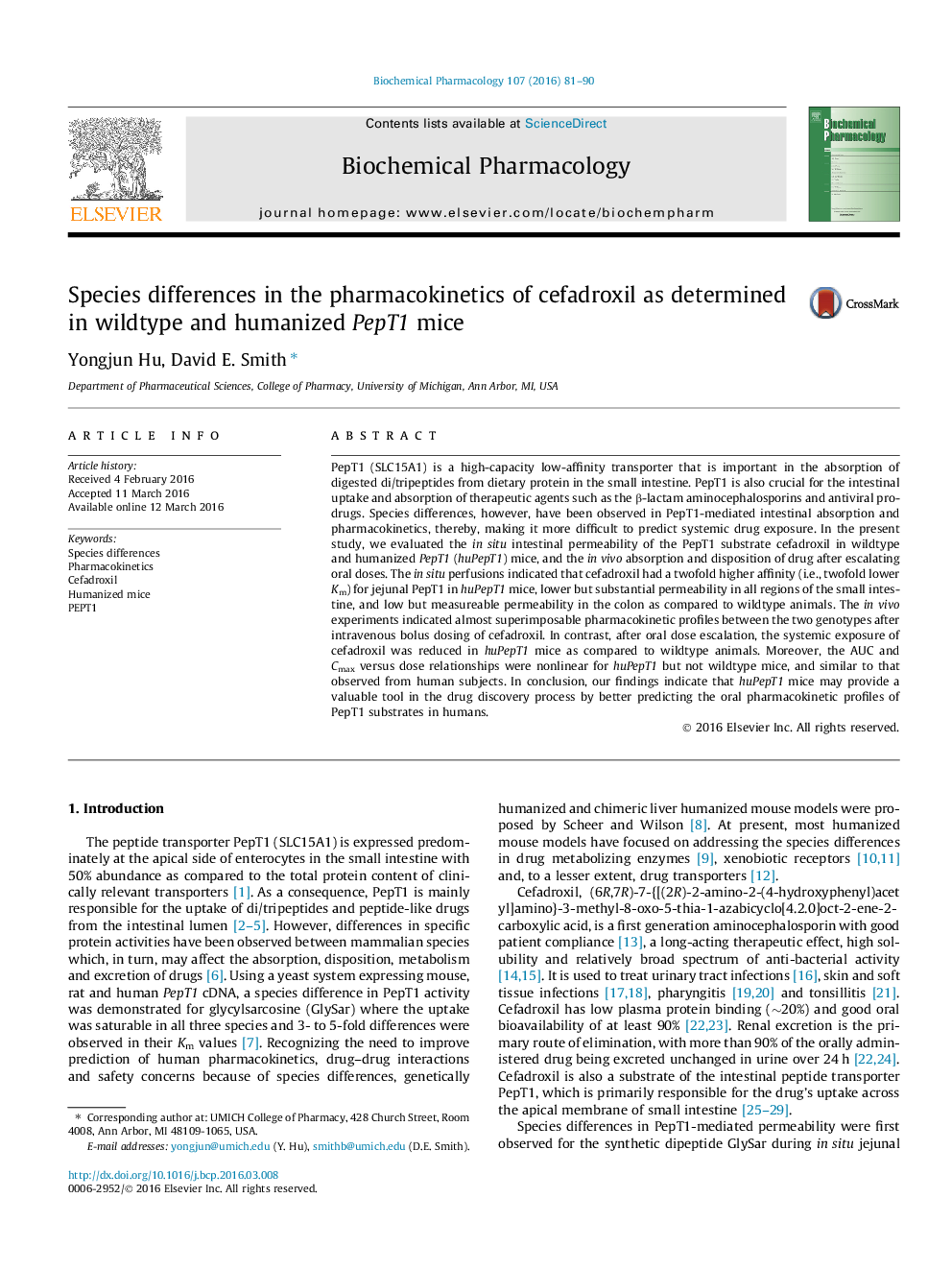| کد مقاله | کد نشریه | سال انتشار | مقاله انگلیسی | نسخه تمام متن |
|---|---|---|---|---|
| 2511803 | 1557905 | 2016 | 10 صفحه PDF | دانلود رایگان |

PepT1 (SLC15A1) is a high-capacity low-affinity transporter that is important in the absorption of digested di/tripeptides from dietary protein in the small intestine. PepT1 is also crucial for the intestinal uptake and absorption of therapeutic agents such as the β-lactam aminocephalosporins and antiviral prodrugs. Species differences, however, have been observed in PepT1-mediated intestinal absorption and pharmacokinetics, thereby, making it more difficult to predict systemic drug exposure. In the present study, we evaluated the in situ intestinal permeability of the PepT1 substrate cefadroxil in wildtype and humanized PepT1 (huPepT1) mice, and the in vivo absorption and disposition of drug after escalating oral doses. The in situ perfusions indicated that cefadroxil had a twofold higher affinity (i.e., twofold lower Km) for jejunal PepT1 in huPepT1 mice, lower but substantial permeability in all regions of the small intestine, and low but measureable permeability in the colon as compared to wildtype animals. The in vivo experiments indicated almost superimposable pharmacokinetic profiles between the two genotypes after intravenous bolus dosing of cefadroxil. In contrast, after oral dose escalation, the systemic exposure of cefadroxil was reduced in huPepT1 mice as compared to wildtype animals. Moreover, the AUC and Cmax versus dose relationships were nonlinear for huPepT1 but not wildtype mice, and similar to that observed from human subjects. In conclusion, our findings indicate that huPepT1 mice may provide a valuable tool in the drug discovery process by better predicting the oral pharmacokinetic profiles of PepT1 substrates in humans.
Figure optionsDownload as PowerPoint slide
Journal: Biochemical Pharmacology - Volume 107, 1 May 2016, Pages 81–90